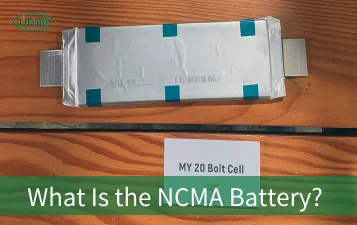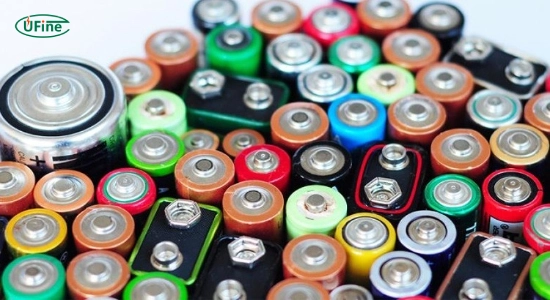
- Part 1. What are rechargeable batteries?
- Part 2. What are alkaline batteries?
- Part 3. Are rechargeable batteries alkaline?
- Part 4. Can alkaline batteries be recharged?
- Part 5. What types of rechargeable batteries are available?
- Part 6. Why can’t alkaline batteries compete with rechargeable batteries?
- Part 7. Are rechargeable batteries environmentally friendly?
- Part 8. Differences between rechargeable and alkaline batteries
- Part 9. How to choose the right battery for your needs?
- Part 10. FAQs
Rechargeable batteries are integral to modern life, powering everything from smartphones to electric cars. However, there needs to be some clarification regarding the chemistry behind these batteries. One common question is: Are rechargeable batteries alkaline? This article will explain rechargeable batteries, describe how they work, and discuss whether people can recharge alkaline batteries. By the end of this guide, you’ll have a clear understanding of this topic and answers to related FAQs.
Part 1. What are rechargeable batteries?
Manufacturers design rechargeable batteries, also known as secondary batteries, to be recharged and reused multiple times. Unlike disposable batteries intended for single use, these batteries store and release energy over several cycles. People commonly use them on laptops, cameras, and cordless tools.
The key to their reusability lies in their chemical composition and design. When you connect the battery to a power source, the chemical reactions reverse, restoring its energy capacity. This process is cost-effective and environmentally friendly, as it reduces waste compared to single-use batteries.
Part 2. What are alkaline batteries?
Alkaline batteries are one of the most commonly used types of disposable batteries. They derive their name from the alkaline electrolyte (usually potassium hydroxide) used in their construction. Alkaline batteries are well-known for their long shelf life and ability to deliver steady power over time.
Manufacturers design these batteries as non-rechargeable and classify them as primary batteries. People use them in devices like remote controls, flashlights, and toys. While inexpensive and reliable, they are meant for one-time use and must be disposed of once depleted.
Part 3. Are rechargeable batteries alkaline?
No, rechargeable batteries are not alkaline. Rechargeable batteries and alkaline batteries have distinct chemistries and purposes. While people design alkaline batteries primarily for single use, they design rechargeable batteries for multiple recharge cycles.
The confusion arises from the fact that some alkaline batteries claim to be rechargeable. However, people do not widely use these because they have a much shorter lifespan than other rechargeable battery types like lithium-ion, nickel-metal hydride (NiMH), or nickel-cadmium (NiCd). Actual rechargeable batteries rely on chemistries that allow for efficient energy storage and recharging, which alkaline batteries cannot achieve effectively.
Lithium VS. Alkaline Batteries: A Comprehensive Comparison
Part 4. Can alkaline batteries be recharged?
Technically, yes—but it is not recommended. You can recharge alkaline batteries using specific chargers, but this comes with significant limitations and risks. Standard alkaline batteries are not designed for recharging, and attempting to do so can cause:
- Leakage: The battery may leak corrosive chemicals.
- Reduced capacity: Each recharge cycle significantly diminishes the battery’s performance.
- Safety hazards: Overcharging or improper handling can lead to battery rupture or fire.
Rechargeable alkaline batteries (RAM or Alkaline Manganese) exist but are less popular due to their limited recharge cycles and lower efficiency than other rechargeable battery types.
Part 5. What types of rechargeable batteries are available?
There are several rechargeable batteries, each with its strengths and ideal use cases. Here are the most common ones:
- Lithium-ion (Li-ion): These are the most widely used rechargeable batteries today, found in smartphones, laptops, and electric vehicles. They are lightweight, have a high energy density, and maintain their charge well over time.
- Nickel-Metal Hydride (NiMH): Commonly used in AA and AAA rechargeable batteries, NiMH batteries are reliable and environmentally friendly. They are ideal for household devices like cameras, remote controls, and toys.
- Nickel-Cadmium (NiCd): Although less commonly used due to environmental concerns, NiCd batteries are durable and perform well in extreme temperatures. They are often used in industrial applications.
- Lead-acid: These are bulky but cost-effective batteries commonly used in cars and backup power systems.
None of these rechargeable batteries are alkaline, as their chemistries rely on different materials and processes.
Part 6. Why can’t alkaline batteries compete with rechargeable batteries?
While alkaline batteries are excellent for single-use applications, they fall short when compared to rechargeable batteries for several reasons:
- Limited recharge cycles: Rechargeable alkaline batteries can only handle a few recharge cycles, while NiMH or Li-ion batteries can last hundreds or even thousands of cycles.
- Lower energy density: Rechargeable alkaline batteries store less energy than lithium-ion or NiMH batteries of the same size.
- Cost inefficiency: Over time, replacing alkaline batteries adds up, making rechargeable batteries a more economical choice.
Part 7. Are rechargeable batteries environmentally friendly?
Rechargeable batteries are generally more environmentally friendly than alkaline batteries because they reduce waste. A single rechargeable battery can replace hundreds of disposable alkaline batteries, reducing landfill waste and resource consumption. However, properly recycling rechargeable batteries is essential, as they contain materials like lithium, cadmium, or lead that can harm the environment if not handled correctly.
Part 8. Differences between rechargeable and alkaline batteries
When choosing between rechargeable and alkaline batteries, understanding their differences is crucial for making an informed decision. Here’s a simple breakdown of their key distinctions:
- Battery Type: Alkaline batteries are primary batteries designed for single use, while rechargeable batteries are secondary batteries that can be reused multiple times.
- Voltage Output: Alkaline batteries typically provide a voltage of 1.5 volts, whereas most rechargeable batteries, like NiMH, offer about 1.2 volts.
- Lifespan: Alkaline batteries generally have a shorter lifespan, lasting 5 to 10 years in storage, while rechargeable batteries can last 2 to 5 years, depending on usage and type.
- Rechargeability: Alkaline batteries are not designed for recharging; attempting to do so can be unsafe. In contrast, rechargeable batteries can be cycled through charging and discharging hundreds to thousands of times.
- Cost Efficiency: Although alkaline batteries are cheaper upfront (around $0.50 to $1 each), rechargeable batteries (around $2 to $3 each) become more cost-effective over time due to their reusable ability.
- Environmental Impact: Rechargeable batteries are more environmentally friendly as they reduce waste significantly compared to disposable alkaline batteries, contributing to landfill issues.
- Performance in High-Drain Devices: Rechargeable batteries perform better in high-drain devices (like digital cameras), while alkaline batteries are more suited for low-drain applications (like remote controls).
- Self-Discharge Rate: Rechargeable batteries tend to lose charge over time, even when not in use, but modern NiMH types have improved self-discharge rates compared to older models.
- Energy Density: Alkaline batteries have a higher energy density, making them suitable for devices that require a steady power supply over time, while rechargeable batteries have a lower energy density but can better handle higher current draws.
- Shelf Life: Alkaline batteries can maintain their charge for up to 10 years, making them ideal for emergency kits, while rechargeable options may require more frequent charging even when stored.
Comparison Table
| Feature | Alkaline Batteries | Rechargeable Batteries |
|---|---|---|
| Battery Type | Primary (single-use) | Secondary (multi-use) |
| Voltage Output | 1.5V | 1.2V |
| Lifespan | 5-10 years | 2-5 years |
| Rechargeability | Not rechargeable | Rechargeable |
| Cost | $0.50 – $1 each | $2 – $3 each |
| Environmental Impact | Higher waste | Lower waste |
| Performance | Better for low-drain devices | Better for high-drain devices |
| Self-Discharge Rate | Minimal loss | Higher loss in older types |
| Energy Density | Higher | Lower |
| Shelf Life | Up to 10 years | Shorter, requires regular charging |
Understanding these differences helps consumers select the right battery type based on their specific needs and usage patterns, ensuring optimal performance and sustainability in their choices.
Part 9. How to choose the right battery for your needs?
Choosing between rechargeable and alkaline batteries depends on your specific needs. Here are some guidelines:
- For high-drain devices: Opt for rechargeable batteries like lithium-ion or NiMH, which are better suited for devices that consume a lot of energy (e.g., cameras, and gaming controllers).
- For low-drain devices: Alkaline batteries are a cost-effective choice for devices like remote controls or clocks that don’t use much power.
- For long-term savings: Rechargeable batteries are more economical in the long run, especially for devices you use frequently.
Part 10. FAQs
-
Can I recharge a standard alkaline battery?
No, standard alkaline batteries are not designed for recharging. Attempting to recharge them can cause leakage, reduced performance, and safety hazards. -
What is the difference between NiMH and alkaline batteries?
NiMH batteries are rechargeable and have a higher energy capacity, while alkaline batteries are typically single-use and have a long shelf life. -
Are rechargeable alkaline batteries worth it?
Rechargeable alkaline batteries are less efficient and have a shorter lifespan than other rechargeable options, such as lithium-ion or NiMH batteries. Therefore, they are rarely recommended. -
Is it safe to dispose of alkaline batteries in the trash?
Yes, small quantities of alkaline batteries can be disposed of in the trash, as they don’t contain heavy metals. However, recycling them is a more environmentally friendly option. -
How long do rechargeable batteries last?
The lifespan of rechargeable batteries depends on their type. For example, lithium-ion batteries can last 300-500 cycles, while NiMH batteries can last up to 1,000 cycles with proper care.
Related Tags:
More Articles

What is the NCMA battery? What is the difference between it and the NMC battery? Which one is better? This article will answer your questions.
What Is the Lithium Battery Short Circuit?
What is the lithium battery short circuit? To understand a lithium battery short circuit, we first need to understand how the battery works.
How to Distinguish Battery Cells, Battery Modules, And Battery Packs?
Discover how battery cells, modules, and packs work, their engineering roles, and practical guidance for safe and efficient design.
What is the Difference Between Silver Zinc Battery vs. Lithium-ion Rechargeable?
Compare silver zinc and lithium-ion rechargeable batteries: energy density, cycle life, safety, cost, and uses in drones, medical devices, EVs, and electronics.
What are Watts and Watt Hours in Battery?
Understand watt vs watt-hour in batteries: key differences, how to calculate capacity, and why they matter. Includes free comparison table.





